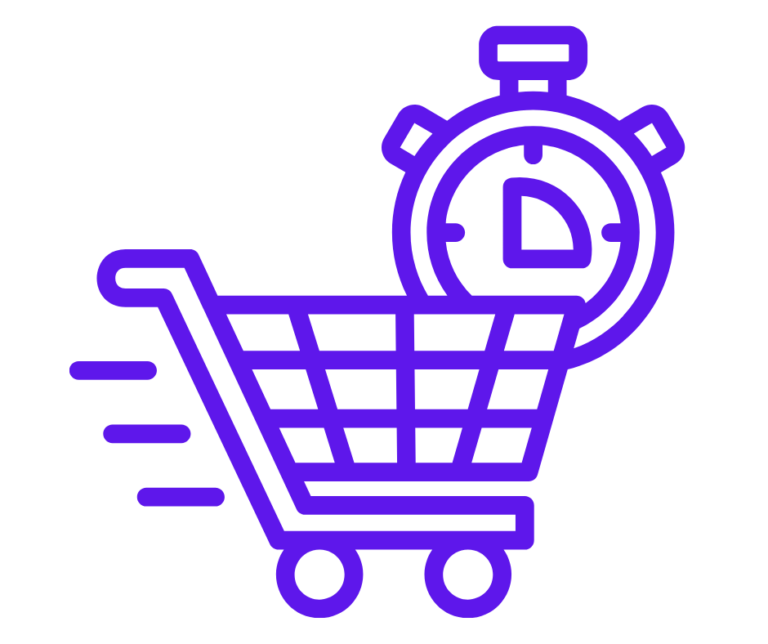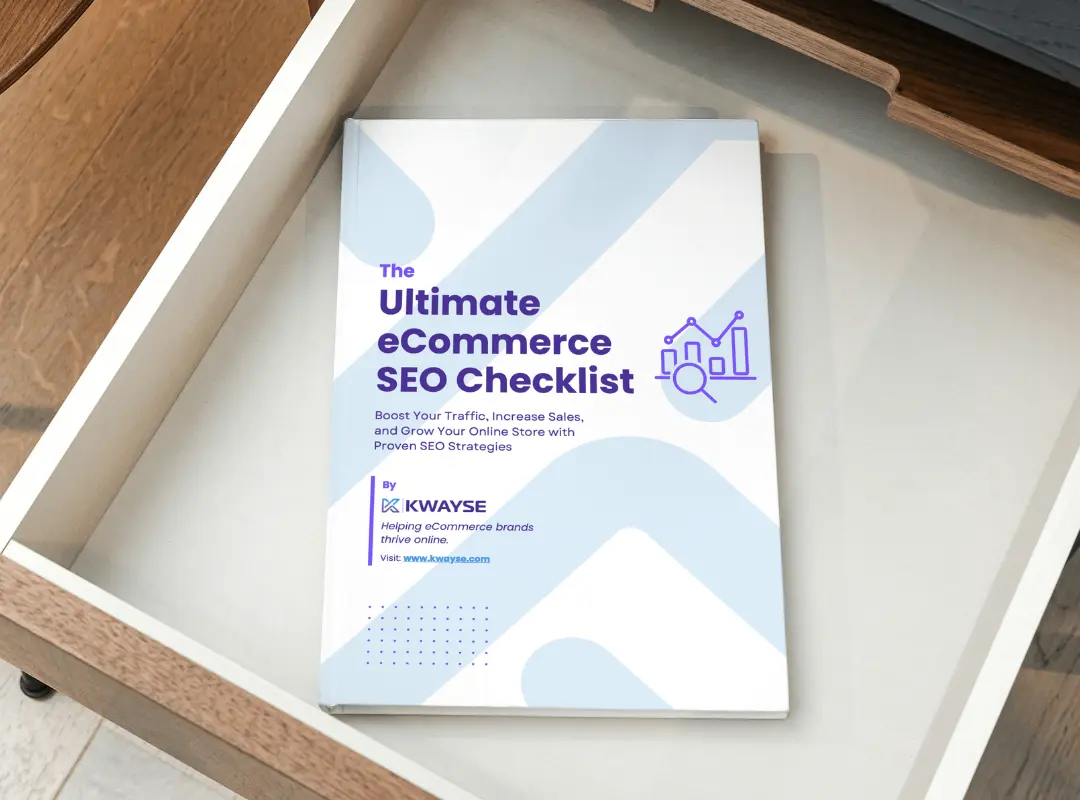Table of Contents

Table of content
By the year 2029, around 3.6 billion people are expected to be shopping online. In 2024, the eCommerce market generated about $4.1 trillion in sales globally. We can all agree that these statistics are absolutely incredible [Source: Statista]. They show us just how popular online shopping is becoming worldwide.
Ecommerce is an incredible opportunity to make lots of money. But you still need to know how to generate money with your online shop. Because, yes, creating an ecommerce website is one thing, knowing how to optimise it and increase sales is another. Fortunately, we compiled a list of 20 tips to boost ecommerce sales, both basic and advanced. We’ll also share with you some 2025 ecommerce marketing tips so you can stay ahead. So if you’re ready to take your online shop to the next level in 2025, this article is for you. Read, take notes and let’s get started!
TL; DR: here is a summary of all the tips we cover about in this article.
Boost Ecommerce Sales summary
| Category | Tip | Description |
|---|---|---|
| Basic Tips | Simplify Site Navigation | Make your website easy to navigate with clear categories and search functionality. |
| Optimize Product Descriptions | Use clear, concise, and keyword-rich descriptions to improve search engine visibility and customer understanding. | |
| Use High-Quality Visuals | Invest in high-quality images and videos to showcase products effectively. | |
| Streamline the Checkout Process | Simplify the checkout process to reduce cart abandonment. Offer multiple payment options and guest checkout. | |
| Personalize the Shopping Experience | Use customer data to offer personalized product recommendations. | |
| Leverage Social Proof | Display customer reviews, testimonials, and ratings to build trust. | |
| Run Limited-Time Promotions | Create a sense of urgency with time-sensitive discounts and offers. | |
| Retarget Abandoned Carts | Use email or ad retargeting to remind customers of items left in their cart. | |
| Advanced Tips | Optimize for Voice Search | Use long-tail keywords and natural language in product descriptions to improve voice search visibility. |
| Invest in AI and Machine Learning | Utilize AI-powered recommendations, predictive analysis, and personalized content. | |
| Implement Augmented Reality (AR) | Allow customers to virtually try on products or see them in their environment. | |
| Develop a Content Marketing Strategy | Create valuable content like blog posts, videos, and guides to attract and engage customers. | |
| Use Omnichannel Marketing | Provide a consistent shopping experience across all channels. | |
| Incorporate Chatbots for Customer Support | Use chatbots to answer customer questions instantly and improve customer satisfaction. | |
| Run A/B Tests on Key Pages | Experiment with different page layouts, CTAs, and content to optimize conversions. | |
| 2025 Ecommerce Marketing Tips | Enhanced Social Commerce | Leverage social media platforms for direct sales and shopping experiences. |
| Sustainable and Ethical Marketing | Highlight eco-friendly practices and ethical sourcing to appeal to conscious consumers. | |
| AI-Powered Dynamic Pricing | Use AI to adjust prices in real-time based on demand and competition. | |
| Voice Commerce Integration | Integrate voice-activated shopping experiences into your eCommerce strategy. |
Basic Tips
- Simplify Site Navigation
- Optimise Product Descriptions
- Use High-Quality Visuals
- Streamline the Checkout Process
- Personalise the Shopping Experience
- Leverage Social Proof
- Run Limited-Time Promotions
- Retarget Abandoned Carts
- Audit your Ecommerce Website often
Advanced Tips
- Optimise for Voice Search
- Invest in AI and Machine Learning
- Implement Augmented Reality (AR)
- Develop a Content Marketing Strategy
- Use Omnichannel Marketing
- Incorporate Chatbots for Customer Support
- Run A/B Tests on Key Pages
2025 Ecommerce Marketing Tips
- Enhanced Social Commerce
- Sustainable and Ethical Marketing
- AI-Powered Dynamic Pricing
- Voice Commerce Integration
Get your free copy of our Ultimate eCommerce SEO Checklist, and start boosting your website’s traffic & sales!
"The Ultimate eCommerce SEO Checklist"
Send download link to:
Basic Tips to boost ecommerce sales
1. Simplify Site Navigation

- Why is it important: By simplifying the navigation of your ecommerce website, you will greatly enhance the user experience. It will allow them to find what they’re looking for quickly and easily. This will ensure better user engagement, which in turn will increase the chances of them making a purchase.
- How to do it:
- Limit Main Menu Items: Focus on essential categories only.
- Use Descriptive Labels: Choose clear, direct labels for each menu item.
- Implement a Search Bar: Allow users to locate products or pages directly.
- Organise Subcategories: Group related items under broad, top-level categories.
- Use a Clear Visual Hierarchy: Make navigation easy to follow with consistent placement and design.
2. Optimise Product Descriptions

- Why is it important: Optimising product descriptions is essential because it helps attract the right customers, enhances Ecommerce SEO visibility, and improves the overall shopping experience. Well-written descriptions clarify product benefits, address common customer questions, and incorporate keywords, making it easier for search engines to rank the product pages higher. Clear, detailed descriptions also reduce the likelihood of returns by providing accurate product expectations, ultimately boosting conversions and customer satisfaction.
- How to do it: Use clear, engaging, and SEO-friendly product descriptions with essential keywords for search engine visibility and customer clarity.
3. Use High-Quality Visuals

- Why is it important: High-quality visuals are crucial in eCommerce because they immediately capture attention and help build trust. Clear, detailed images let customers view products from different angles, increasing confidence in what they’re buying and reducing return rates. High-end visuals can also create an engaging and memorable experience, making your brand more appealing and professional. Plus, optimised images improve load speeds and search visibility, helping both user experience and SEO.
- How to do it:
- Use Professional Equipment: High-resolution cameras and proper lighting can dramatically improve image quality.
- Invest in a Skilled Photographer: Professional photographers know how to capture products in the best light and angles.
- Edit and Retouch Images: Use software like Adobe Photoshop or Lightroom for colour correction, sharpness, and background adjustments.
- Use Multiple Angles: Capture products from various perspectives to showcase features.
- Incorporate Lifestyle Photography: Show products in real-life settings to make them relatable.
4. Streamline the Checkout Process

- Why is it important: A streamlined checkout process reduces cart abandonment by making it easy and quick for customers to complete purchases. Complicated checkouts often frustrate users, leading them to abandon their carts. Simplified checkouts improve the shopping experience, increasing conversions and customer satisfaction.
- How to do it:
- Offer Guest Checkout: Let users checkout without requiring an account.
- Minimise Form Fields: Request only essential information.(Name, phone, address).
- Provide Multiple Payment Options: Offer diverse payment methods (Apple Pay, PayPal, etc.).
- Enable Progress Indicators: Show customers their step in the process.
- Optimise for Mobile: Ensure a fast, easy experience on mobile devices.
5. Personalise the Shopping Experience

- Why is it important: Personalising the shopping experience builds customer loyalty by making each visitor feel valued and understood. Offer relevant products, tailored content, and personalised recommendations, to increase engagement and improve conversion rates, as customers are more likely to purchase items that match their preferences.
- How to do it:
- Use Browsing History for Recommendations: Show products based on what customers previously viewed.
- Send Personalised Emails: Offer reminders or special discounts based on past purchases.
- Leverage AI and Machine Learning: Utilise AI to predict customer preferences and suggest products.
- Enable User Accounts: Allow saved preferences and wish lists for a customised experience.
6. Leverage Social Proof

- Why is it important: Social proof, like reviews and testimonials, builds trust and credibility with potential customers. When shoppers see others have had positive experiences, they feel more confident about buying. Social proof also reduces hesitation, making them more likely to complete purchases.
- How to do it:
- Display Customer Reviews and Ratings: Showcase positive reviews directly on product pages and/or home page.
- Use Testimonials: Feature quotes from satisfied customers on your site.
- Showcase User-Generated Content: Share photos or videos from real customers using your products.
- Highlight Best Sellers or “Trending” Products: Let customers know which items are popular, boosting interest.
7. Run Limited-Time Promotions

- Why is it important: Limited-time promotions create a sense of urgency, encouraging customers to buy now instead of waiting. This tactic taps into FOMO (fear of missing out) and can lead to quicker sales and boost conversions. Such promotions also help clear inventory faster and attract new customers who may stay loyal.
- How to do it:
- Highlight the Offer: Feature it on your homepage, banners, or social media.
- Offer Exclusive Discounts: Give discounts like “10% off for 24 hours.”
- Use Email and SMS Alerts: Remind customers about the promotion’s end time.
- Set a Clear Time Frame: Use countdowns or specify end dates.
8. Retarget Abandoned Carts

- Why is it important: Retargeting abandoned carts helps recover lost sales by reminding customers of products they left behind, prompting them to complete their purchase. Since these customers have already shown interest, retargeting them can significantly boost conversions without extra acquisition costs.
- How to do it:
- Send Reminder Emails: Follow up with reminders, often offering incentives.
- Use Retargeting Ads: Show ads on social media or search engines to bring customers back.
- Offer Limited-Time Discounts: Provide a discount on abandoned items to encourage a return.
9. Audit your Ecommerce Website often

- Why is it important: Regularly auditing your eCommerce website is essential for ensuring optimal performance, improving user experience, and maximising sales. Audits help identify SEO issues, usability problems, or technical errors that may prevent customers from finding or purchasing from your site. Addressing these issues keeps your website competitive and ensures smooth operations that align with the latest trends and search engine algorithms.
- How to do it: You can use our free ecommerce seo audit to have a quick glimpse at your ecommerce performance.
Advanced Tips to boost ecommerce sales
10. Optimise for Voice Search

- Why is it important: Voice search is rapidly growing, with customers using smart assistants like Alexa or Siri to shop. Voice search often uses longer, conversational phrases, so optimising for this can help capture new audiences.
- How to do it: Include natural, question-based keywords and phrases in product descriptions. Use structured data (schema markup) to help search engines understand your content and include answers to common customer queries.
11. Invest in AI and Machine Learning

- Why is it important: AI enables personalised shopping experiences by analysing data to recommend products, predict demand, and personalise content. This targeted approach increases relevance, engagement, and conversion rates.
- How to do it: Implement AI-powered recommendation engines for personalised product suggestions. Use AI-driven email marketing platforms to tailor content to customer behaviours, and explore predictive analytics tools to anticipate stock and demand.
12. Implement Augmented Reality (AR)

- Why is it important: AR enhances the online shopping experience by allowing customers to visualise products in real-world settings, reducing uncertainty and improving purchase confidence.
- How to do it: Integrate AR plugins or tools that enable customers to “try on” products or visualise them in their own spaces, especially for clothing, furniture, or decor. Platforms like Shopify and WooCommerce offer AR integration options.
13. Develop a Content Marketing Strategy

- Why is it important: Content marketing builds trust, educates customers, and drives organic traffic. Valuable content also positions the brand as an authority, improving credibility and loyalty.
- How to do it: Publish informative blogs, tutorials, and guides that address customer questions and interests. Use keyword research to target content topics, and repurpose the content into various formats like videos or infographics to reach broader audiences.
14. Use Omnichannel Marketing

- Why is it important: Omnichannel marketing ensures a consistent brand experience across all channels, meeting customers wherever they are. This strategy increases brand loyalty and keeps customers engaged.
- How to do it: Develop a unified marketing approach for social media, email, and physical stores, ensuring branding, messaging, and promotions are aligned. Use tools that centralise data from multiple channels to create seamless customer profiles.
15. Incorporate Chatbots for Customer Support

- Why is it important: Chatbots provide instant responses, improving customer satisfaction and reducing cart abandonment by addressing questions quickly.
- How to do it: Integrate chatbots on your site to answer FAQs, guide customers through purchasing, or recommend products. Customise the bot’s responses to reflect the brand voice and make sure it can handle basic support inquiries.
16. Run A/B Tests on Key Pages

- Why is it important: A/B testing helps identify which elements on a page are most effective at driving conversions. Regular testing leads to data-driven design improvements.
- How to do it: Test variations of elements like CTA buttons, page layouts, product descriptions, and images. Use A/B testing tools like Google Optimise or Optimizely, analyse the results, and implement the best-performing versions.
2025 Marketing Tips To Boost Ecommerce Sales
17. Enhanced Social Commerce

- Why is it important: As social media increasingly becomes a shopping platform, users can discover and buy products directly through posts or live streams, shortening the sales funnel.
- How to do it: Integrate shopping features on platforms like Instagram, TikTok, or Facebook. Use shoppable posts, product tags, and live shopping events to engage users directly.
18. Sustainable and Ethical Marketing

- Why is it important: Conscious consumerism is on the rise, and buyers are drawn to brands that align with eco-friendly and ethical values.
- How to do it: Highlight sustainable practices in product descriptions, and promote eco-friendly sourcing in marketing content. Use certifications to build credibility, such as organic or fair trade labels.
19. AI-Powered Dynamic Pricing

- Why is it important: AI-driven pricing adjusts in real-time, helping businesses stay competitive and maximise revenue by considering demand, competition, and customer behaviour.
- How to do it: Implement dynamic pricing software that analyses data to adjust prices. Set parameters to ensure profitability while staying competitive.
20. Voice Commerce Integration

- Why is it important: With more users relying on voice-activated devices, brands that optimise for voice shopping gain a competitive advantage in ease and convenience.
- How to do it: Create voice-search-friendly content and make your product catalogue accessible to voice-enabled platforms. Integrate with compatible devices and consider offering voice-activated promotions or deals.
Conclusion
Ecommerce represents a wonderful opportunity for all retailers. It continues to grow year on year, enabling many retailers to earn a comfortable living. So if you want to be one of those ecommerce sellers, make sure you put the tips to boost ecommerce sales we’ve given you into practice to make your sales skyrocket!





